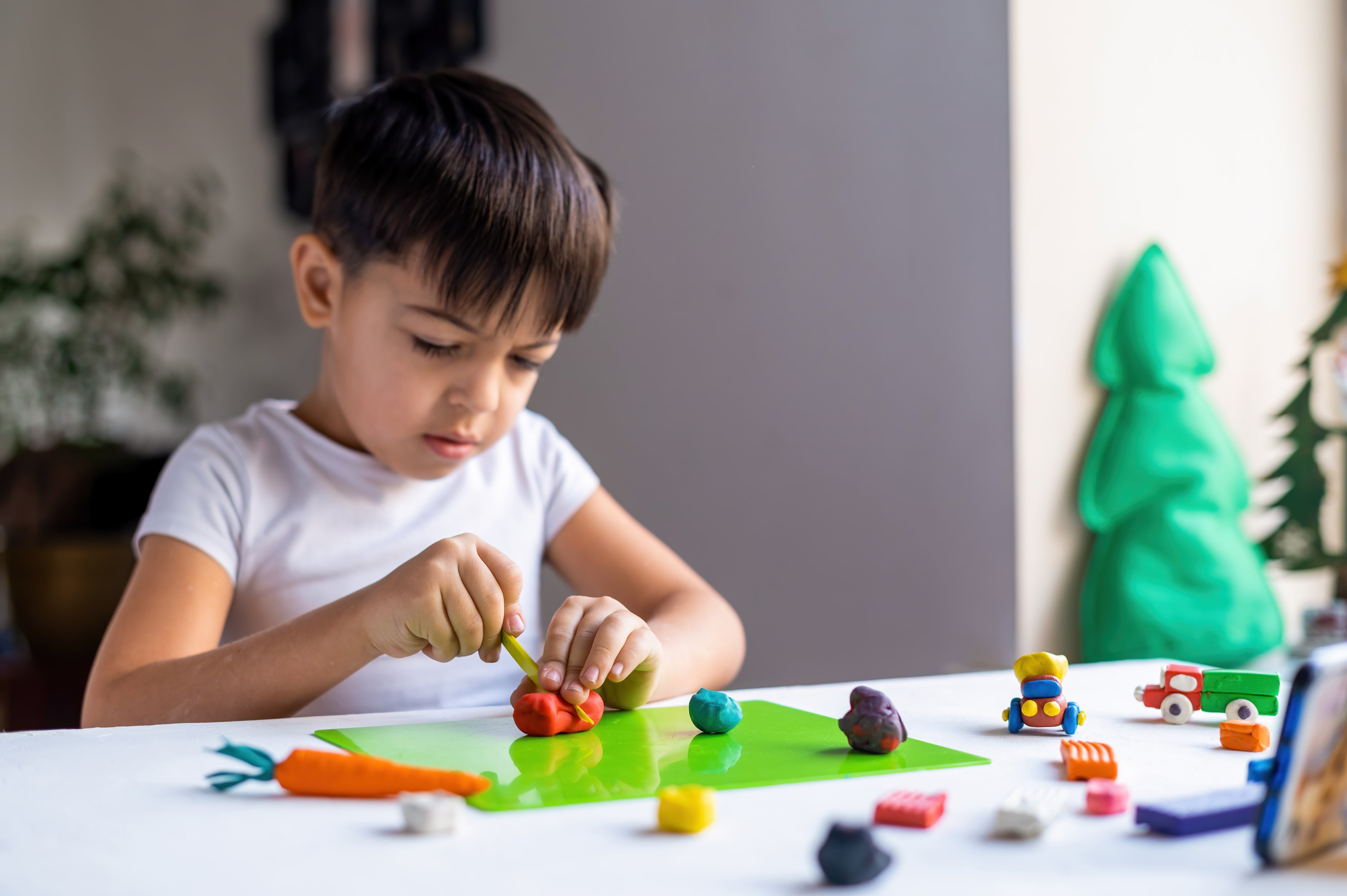Toddlers typically choose what to play with based on what provokes their interest at the time. So, setting up an environment based on children's needs and desires is as important as selecting an activity. Rather than simply keeping it on the shelf, make sure to set it up in a way that will keep them interested. Here are some tips to keep in mind while setting up an activity.
1. Display it on a shelf
After the child finishes playing, we usually scoop all the toys up and throw them into a toy box. Instead, shelves store toys in an orderly manner. So the child can see all of their toys at a glance, all of their toys are within reach, easier to prevent them from damage, and see if they are missing a part or need repairs. Gradually, the child learns to treat them with more care and respect.

2. Make it attractive
Arranging the toys on a shelf or tray improves the visual appeal of the toys. If the child is no longer interested in the activity, change the tray and make it more enticing.
3. Showing what belongs together
Keeping a tray for each set of toys is another attractive way. Keep the necessary items together. For example, with play dough, we can include a container of play dough and a mat to protect the table.
4. Prepare everything
Prepare a child-friendly environment to facilitate maximum independent learning and exploration for the child. So if you are preparing a painting area for the kid, put the apron on a hook on one side of the easel and keep a moist cloth on the other side for spills. A container of fresh paper and a folding clothesline with clothespins will do so that they can hang their paintings to dry on their own. These steps will require some assistance for younger children, but they will progressively be able to take on more and more on their own.
5. Undo the activity
A toddler finds a completed task less appealing than the incomplete one. So, Before putting the activity back on the shelf, dismantle it. Place the pieces in a bowl to the left (say, puzzle pieces) and the other part to the right (the empty puzzle base). Tracking the movement from left to right is indirect preparation for reading. Also, Cleaning up teaches a child to appreciate the effort that goes into doing a job. It also teaches them to care for what they own by cleaning, maintaining, or putting it away where it belongs.
Together, Lets us build our next generation fantastic. Great Day.

